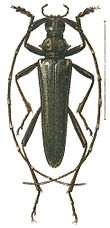
The longhorn beetles (Cerambycidae), also known as long-horned or longicorns, are a large family of beetles, with over 35,000 species described. Most species are characterized by extremely long antennae, which are often as long as or longer than the beetle's body. In various members of the family, however, the antennae are quite short and such species can be difficult to distinguish from related beetle families such as the Chrysomelidae. The scientific name of this beetle family goes back to a figure from Greek mythology: after an argument with nymphs, the shepherd Cerambus was transformed into a large beetle with horns.
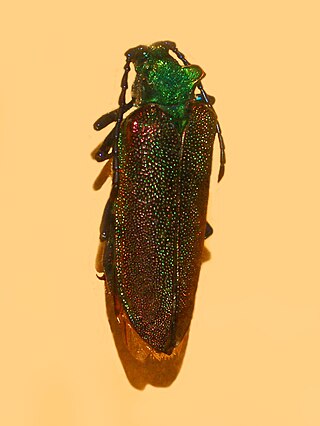
The Oxypeltidae are a small family belonging to the superfamily Chrysomeloidea, widespread in the Andean region of Chile and Argentina. They have traditionally been considered a group within the Cerambycidae.
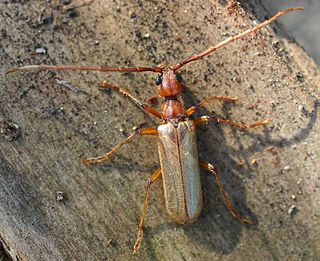
The Vesperidae are a small family of beetles, normally classified within the family Cerambycidae, of heterogeneous aspect but all characterised by larval stages related to roots of herbaceous plants or trees

Lepturinae, the lepturine beetles, is a subfamily of the longhorn beetle family (Cerambycidae), containing about 150 genera worldwide. This lineage is most diverse in the Northern Hemisphere. Until recently the subfamily Necydalinae was included within the lepturines, but this has been recently recognized as a separate subfamily. Nine tribes are usually recognized today, with a tenth, Caraphiini, created in 2016. A few genera are of uncertain placement within the subfamily.

Sternidius is a genus of flat-faced longhorns in the family of beetles known as Cerambycidae. There are at least 20 described species in Sternidius.
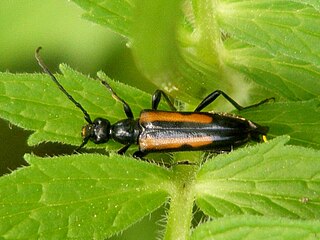
Strangalepta is a genus containing only one species, Strangalepta abbreviata, a longhorned beetle in the family Cerambycidae.
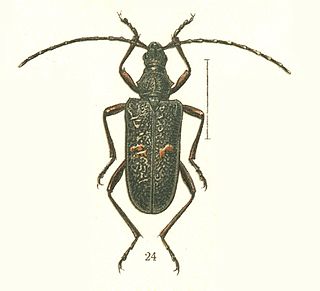
Sachalinobia is a genus of flower longhorns in the beetle family Cerambycidae. There are at least two described species in Sachalinobia.

Trachyderini is a tribe of long-horned beetles in the family Cerambycidae. There are at least 140 genera and 650 described species in Trachyderini.
Dorcasina matthewsii is a species of flower longhorn in the beetle family Cerambycidae. It is found in North America and was described by John Lawrence LeConte in 1869.
Typocerus deceptus is a species of flower longhorn in the family Cerambycidae. It is found in North America.
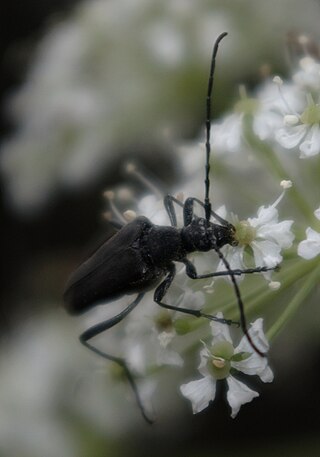
Trachysida aspera is a species of flower longhorn in the beetle family Cerambycidae. It is found in North America.

Tetropium is a genus of long-horned beetles in the family Cerambycidae. There are at least 20 described species in Tetropium.
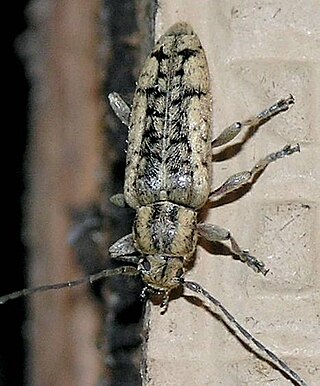
Atimia confusa, known generally as the small cedar borer or small cedar-bark borer, is a species of long-horned beetle in the family Cerambycidae. It is found in North America.

Atimia is a genus of long-horned beetles in the family Cerambycidae. There are about 13 described species in Atimia.
Pygoleptura nigrella is a species of flower longhorn in the beetle family Cerambycidae. It is found in North America.
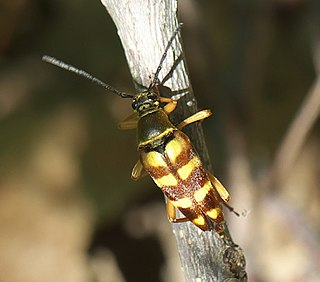
Typocerus velutinus, known generally as the banded longhorn or cerambycid beetle, is a species of flower longhorn in the family of beetles known as Cerambycidae. It is found in North America.

Mallodon dasystomus, the hardwood stump borer, is a species of long-horned beetle in the family Cerambycidae. Specimens range in length from 35mm to 50 mm.
Stenostrophia tribalteata is a species of flower longhorn in the beetle family Cerambycidae. It is found in North America.
Cortodera militaris is a species of flower longhorn in the beetle family Cerambycidae. It is found in North America.
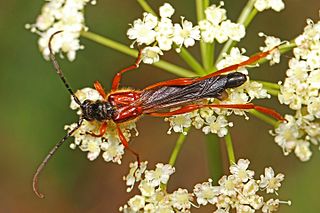
Necydalis diversicollis is a species of long-horned beetle in the family Cerambycidae. It is found in North America.
